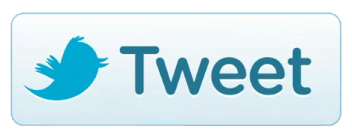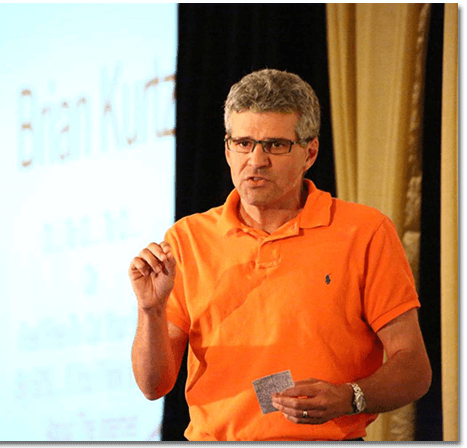|
… and you need to constantly rejuvenate your list by sending re-engagement emails to dormant subscribers and remove those who don’t respond.
Keeping the subscribers engaged is very important for any email marketer to maintain a conversation with them and build relations. Unfortunately, having 100% of your email subscribers engaged at a time is not at all humanly possible since each subscriber behaves differently.
Now you may have a question on how to engage subscribers and re-engage the inactive ones.
In the quest to find out the answer, we have asked 24 industry experts regarding how they engage with their subscribers and what tricks do they use to re-engage with the inactives.
1. Email is a two-way street not a one-way highway.
|
Head of Content at MarketingProfs |
 |
“Email is a two-way street, not a one-way highway. Never “blast” an email. “Blast” is an ugly word that implies aggression. Love your list… don’t antagonize it by “blasting” it. Have fun, be useful!”

|
How do you engage your email subscribers?
- Email is personal – Write email with a warm, personal, human, engaging voice. Make it from a person with an actual personality (as only people have).
- Email is a two-way street not a one-way highway – Invite subscribers to reach out. Seek feedback. Ask them questions. Build a community of like-minded people by seeking their input and then (this is the important part) responding.
- Email Blast – Never “blast” an email. “Blast” is an ugly word that implies aggression. Love your list… don’t antagonize it by “blasting” it.
- Serve an audience – Have fun. Be useful. Because it’s a privilege to have an audience.
- Keep a schedule – Build anticipation by mailing at the same day/time.
- Testing is important – But so is your sensibility as a marketer/business owner.
How do you re-engage inactive subscribers?
Make it stupid obvious for subscribers to unsubscribe. INVITE them to unsubscribe, in fact. You don’t want the disinterested on your list. They depress open rates and (frankly) are depressing emotionally to the sender, too. All of the above applies here, too.
|
|
2. Congruent and consistent communication
|
Direct Response Marketer at briankurtz.me |
 |
“Engagement starts with email always being a relationship event and not always being a revenue event. Congruent and consistent communication is the key. They should “miss you” if you are not consistent.”

|
How do you engage your email subscribers?
Engagement starts with email always being a relationship event and not always being a revenue event.
Congruent and consistent communication: That is, everything you send via email to an audience who knows you must always be something they would expect from you in your personal voice; AND sending consistently (e.g. same time and day of the week if once a week) is also critical (they should “miss you” if you are not consistent).
How do you re-engage inactive subscribers?
See #1. And “ethical bribes” (special content just for them), that’s even better.
|
|
3. Create incredible subject line to ensure maximum email opens.
|
Entrepreneur, Copywriter at copywritematters |
 |
“Create incredible subject line to ensure maximum email opens, and share useful content for your subscribers, as a reward for opening your emails. Stick to an 80-20 rule for email copy: 80% valuable content with 20% promotion.”

|
How do you engage your email subscribers?
I believe the key to ongoing engagement is giving people really awesome reasons to prioritize my emails. I aim to make the content I’m sending as useful as possible, so there is a reward for opening my emails. Great content is the core reason subscribers give me their details and I honor that agreement by sticking to an 80-20 rule: 80% valuable content with 20% promotion.
I think the subject line is also incredibly important to get my emails opened.
When readers notice my emails, know what they contain and are confident the content is worth the click, it becomes a habit to keep opening them.
BOOM. Engaged subscribers.
How do you re-engage inactive subscribers?
This is one thing I am planning at the moment. I will be sending a personalised email pointing out the most recent posts I’ve sent them, with the idea of bringing the content to their attention (and remind them why they signed up in the first place). I’ll include a link to my free copywriting mini-course, if they haven’t done it yet, as a way to rebuild the relationship.
I’ll also point them to other places they can access my content, if email isn’t their bag, and give them the chance to unsubscribe.
We all have too many emails so I feel that it’s up to me to be more awesome, to get them re-engaged with my content, rather than making them feel bad for ignoring my emails.
|
|
4. Try to Re-engage but say “Goodbye” if needed.
|
Head of Content at Mailjet |
 |
“Target inactive users with a reactivation campaign. But remember: you can’t keep everyone happy all the time, so be prepared to say “Goodbye”. It’s also an essential part in any strong emailing strategy.”

|
How do you engage your email subscribers?
At Mailjet, we try to keep our users engaged by always providing value and being true to the promise we make to them when they sign up. We try to be very clear in the kind of content they can expect from us, and aim to deliver exactly that.
In addition to that, we have also started running surveys to ask our newsletter subscribers what they think about our blog content. At the end of the day, we want to create content that is useful, insightful and entertaining for our readers, so their feedback is key to achieve that.
How do you re-engage inactive subscribers?
Every 3-6 months, we target inactive users with a reactivation campaign that gives them the opportunity to tell us what they think of our content, and let us know whether they want to continue receiving our emails or prefer to be removed from our list.
At the end of the day, you can’t keep everyone happy all the time, so being prepared to say “Goodbye” is also an essential part in any strong emailing strategy.
|
|
5. Improve email deliverability
|
Founder at Mirasee |
 |
“Check and Improve the deliverability of your emails because it helps you understand if your subscribers are really inactive, or have they not been receiving our emails in the first place.”

|
How do you engage your email subscribers?
One of the ways I keep our email subscribers engaged is by personally responding to their emails. When I was just getting started, I was known for engaging with my audience, and I did that by answering each and every email I received. I even knew some of my subscribers by name.
As our audience grew, this became more difficult for me to sustain and we switched to me answering a few hand-picked emails and my team handling the rest. But after surveying our audience, we realized that we had lost some of the Mirasee magic when I interacted less with subscribers.
How do you re-engage inactive subscribers?
To re-engage inactive subscribers, we’re doing several things.
One of them is to improve the deliverability of our emails because we want to know: are they really inactive or have they not been receiving our emails in the first place? And so, we’ve been running all our emails through SendForensics to help get us back into the primary inbox of our subscribers. We also roll out re-engagement campaigns occasionally. And we let subscribers choose how often they want to receive our emails.
One of our most successful emails recently had an 86% open rate and 78% click-through rate. The subject line was “LIFT 2018 Hotel Update!” and it was for a targeted group of people. Among the emails for a more general audience, one of the most successful had the subject line, “The psychology of selling.” It was emailed to over 41,000 subscribers and had an open rate of 27% and click-through rate of 20%.
|
|
6. Encourage participation from your subscribers
|
Director of Content Marketing at ConstantContact |
 |
“Encourage participation from your subscribers. Use a survey or poll, ask them to reply with feedback, run a contest, or hold an event for subscribers only. Create exclusive content just for them.”

|
How do you engage your email subscribers?
In order to keep your email subscribers engaged the first thing to keep in mind is that people subscribed because they’re interested in your business in some way.
Most people subscribe because – they want promotions and discounts, exclusive content, or to show support for your business.
Knowing that think about always providing value in the following ways: share information that goes behind the scenes of your business, show your employees, preview some upcoming products or specials, share content you find across the web that relates to your business.
Encourage participation from your subscribers. Use a survey or poll, ask them to reply with feedback, run a contest, or hold an event for subscribers only. Create exclusive content just for them. Share an exclusive coupon, a special preview, or exclusive resources.
How do you re-engage inactive subscribers?
To re-engage inactive subscribers, create campaigns specific to those subscribers.
Try running a “Because we miss you campaign” where you offer something designed to spark their interest in your business again. Encourage inactive subscribers to update their preferences. Perhaps they’re just not getting the right information from you.You can ask them to choose the information they are interested in at the moment. And lastly, you may want to just clean up your list by removing these inactive subscribers.
Send a “Do you still want to hear from us?” campaign and then remove those who don’t show interest. This way you’ll be left with a more engaged list of subscribers overall.
|
|
7. Use stories and examples your subscribers relate to
|
Marketing Coach at ianbrodie.com |
 |
“The core of good email engagement is to write interesting emails about topics your readers care about. Get your subscribers to hit reply to comment or ask you something. Use stories and examples they can relate to.”

|
How do you engage your email subscribers?
For me the core of good email engagement is to write interesting emails about topics your readers care about.
You can boost that by using simple formatting, making them easy to read (short sentences, plenty of white space, mobile friendly).
And you can ask questions. Get your subscribers to hit reply to comment or ask you something. Use stories and examples they can relate to.
But above all, write about things they care about!
How do you re-engage inactive subscribers?
When it comes to re-engagement I track who hasn’t opened or clicked for a month (although measuring open rates isn’t 100% accurate of course). I then send them an “Are you OK?” message saying my system has picked up they haven’t opened or clicked for a while and checking that everything is OK. I encourage them to email me if there are different things they’d like me to email about. Or to unsubscribe if things have changed and they’re no longer interested.
After 3 months of inactivity I flag them and reduce the email frequency, only sending my core ones.
If later in time they wake up and start opening/clicking again I move them back to the full set of emails.
That way my average engagement rate stays high to keep the email system providers happy, but I don’t completely lose touch with people who might temporarily be too busy.
|
|
8. Harness the power of icons in emails
|
Email marketing consultant at EmailMonday |
 |
“Try to harness the power of icons in your email marketing. They can be the visual representation of actions and make it easier for your subscribers to digest text and are also more appealing.”

|
How do you engage your email subscribers?
Most email marketing systems look at open and click rates per campaign as a measure for engagement. But if you want to engage with a person, you have to measure the engagement with that person (not the campaign email).
So I would advise to start using open-reach and click reach to measure email engagement.
The number of people that have engaged with you at least X times over the past period. By sending an email, are you increasing the email engagement of your total database? Or are engaging more intensely with the same people over-and-over while others tune out? You see if your goal was to increase engagement of a certain group, it calls for other tactics.
How do you re-engage inactive subscribers?
That is a good question, I mean you could see every email as a re-activation email.
But there a two kinds of engagement
– Emotional (feel, think, love, experience)
– Behavioral (open, click, purchase).
We can’t really measure both, can we? There is a trend to ask people how they feel about each email with icons at the bottom.
I am not really a fan, too often it grabs more attention than the main Call To Action (which is a bad thing). But I would for instance try to harness the power of icons
in your email marketing they can be the visual representation of actions and make it easier to digest text and more appealing. |
|
9. Don’t need to reengage everyone, focus on people who fit your target demo
|
Email marketing expert & Owner at Reengager |
 |
“You don’t need to re-engage everyone. Just the people who fit your target demo. So create a series of 3-5 emails with content that would resonate with them and make sure there’s a link to click in each email.”

|
How do you engage your email subscribers?
I use a combination of stories, anecdotes and teaching. Though it’s worth pointing out that all of this is for naught unless you understand your market to a T.
You need to do thorough research and understand exactly what their hopes, dreams, fears and desires are, and use that to drive your email content and strategies.
How do you re-engage inactive subscribers?
You generally don’t want to reengage everyone. Just the people who fit your target demo. So create a series of 3-5 emails with content that would resonate with your target demo. Send them out, and make sure there’s a link to click in each email. You could send them a blog post, with teaser copy, forcing them to click a link to read more. 1-2 weeks after you send the series, you can delete anyone who didn’t click on the emails. This keeps your database clean and improves future deliverability.
|
|
10. Write emails that people *want* to read.
|
Email marketer, copywriter at joshuaearl.com |
 |
“Write emails that people *want* to read. Tell stories, respond to questions—spend as much time in their world as you can, and they’ll love hearing from you.”

|
How do you engage your email subscribers?
The biggest “hack” to keeping your list engaged is emailing them more frequently—minimum of once per week. Daily is appropriate in many niches.
Keep the same schedule and people will start to look for your emails.
The other key is, you have to write emails that people *want* to read. Tell stories, respond to questions—spend as much time in their world as you can, and they’ll love hearing from you.
How do you re-engage inactive subscribers?
Most of the time when a subscriber has stopped opening emails from you, it’s VERY difficult to reactivate them. In a majority of cases it’s because the email address they gave you in the first place isn’t one they check very often, or else they’ve changed their main address and stopped checking the address on your list.
About once a quarter, I run a campaign to either wake these subscribers up or unsubscribe them from my list.
What I do is –
- Send a series of 2-3 emails with short, intentionally vague and personal looking subject lines, like “hey,” or “you ok?”
- In the emails I explain that I’m cleaning up my list, and I ask if they still want to be subscribed.
- I send this campaign to subscribers who haven’t opened or clicked on an email in 6 months.
- Usually about 3% of these dormant subscribers will wake up. These tend to stay active in the weeks ahead.
- The remaining 97% of these “zombie subscribers” get unsubscribed from my list.
|
|
11. Treat your email subscribers like royalty
|
CEO and Senior Copywriter at Horizon Peak Consulting |
 |
“When someone raises their hand and says they want to hear from you & gives you permission to send emails, that is a precious, precious thing. Don’t take that for granted. Treat your email subscribers like royalty.”

|
How do you engage your email subscribers?
When someone raises their hand and says they want to hear from you, and gives you permission to send emails to their already-overflowing inbox, that is a precious, precious thing. I don’t take that for granted. I treat my email subscribers like royalty.
To keep my email subscribers engaged, I provide the most value I can in every email. Sometimes that value is a thoughtful article, or premium content – but sometimes that value is simply an entertaining personal story that I believe will resonate with them where they’re at in their business.
Whatever I send, my goal is to personally connect with the reader, be exceedingly generous with them, and help them with real challenges in their lives, so they look forward to getting and opening my emails.
I keep my email subscribers at the top of my priority list.
They get my content first, they get information about upcoming offerings first, and they get discounts on every product I launch. I also send things to my email list that I don’t post anywhere else. I want them to feel like they’re in an exclusive club by being an email subscriber – and if they don’t open the email, they might miss out on something cool.
How do you re-engage inactive subscribers?
To re-engage inactive subscribers, I do something that may sound a little counterintuitive.
I ask them for a favor.
Every once in a while, I’ll send out a brief poll or a simple question to my email list so I can learn more about them (people change over time, so this is critical to do regularly). The ultimate goal is to serve them better – but it has the added benefit of stirring up the attention of people who haven’t opened my emails in a while.
I’m not sure of the psychology behind it – it could be that they feel it’s an opportunity to really interact with me (and interaction is so important to engagement!); or it could be that it’s just a different kind of email than I would usually send out, so it stands out; or it could be the simple fact that we humans like to talk about ourselves – but I always see engagement go up when I ask for a favor.
|
|
12. Make your subscribers feel a part of your process
|
An award-winning screenwriter, copywriter, ghostwriter and business strategist at thejamiejensen.com |
 |
“Make your subscribers feel a part of your process allowing them to invest mentally and emotionally before they invest financially. It’s a wonderful trust-builder and creates brand advocacy like crazy.”

|
How do you engage your email subscribers?
Keeping subscribers engaged is a matter of telling stories that will entertain, inspire, and provide value for them. There is a huge trend towards increased transparency, authenticity, and kind of “lifting the curtain” (a la The Wizard of Oz) in marketing right now (particularly email marketing).
One of the things I talk about a lot is telling the “how” story of how a product or offer is made.
By getting deep into the step-by-step process, customers get to feel like they’re involved in a really personal way. This allows them to invest mentally and emotionally before they invest financially. It’s a wonderful trust-builder and creates brand advocacy like crazy.
How do you re-engage inactive subscribers?
When I need to re-engage subscribers, I typically try something innovative or intensely polarizing to see how they respond.
Subject lines that are more absurd, or spark instant curiosity will get more opens and then, once inside the email, you can ask a subscriber more about what they want to see from you.
The more you can treat your subscribers like members of a community, and real human beings with frustrations, fears, and desires — and less like numbers in a list — the more engagement you’ll see.
|
|
13. Be consistent with your email marketing, but don’t be afraid to experiment.
|
Director of Marketing at Buffer |
 |
“Be consistent with your email marketing – use recognizable “From name,” similar subject lines, and a consistent sending schedule. But an out-of-the-box email occasionally works well, to stand out.”

|
How do you engage your email subscribers?
The main thing for me is that I be as consistent as possible: same “From name,” similar subject lines, and a consistent sending schedule. For my personal newsletter, everything comes from Kevan Lee, is titled “10 things,” and arrives every two weeks. At Buffer, we use “Kevan from Buffer” or “Hannah from Buffer,” and we’ve seen the best success when we email from these names that people recognize.
That being said, there’s definitely room for experimentation here! And I’ve found that if you’re consistent 9 times out of 10 and experiment the other 1 time, it can often make that one time really stand out in a good way.
Also a new tactic that I’ve been trying is –
To send a bonus email on the weeks in between. I’ll send this email just to those who opened the previous week’s email, and I’ll mention this in the bonus email. That way, the readers recognize that there is value in opening the newsletter each time. 🙂
How do you re-engage inactive subscribers?
For these folks, we typically do a one-off campaign every few months, checking to see if they still want to be part of the list. There’s no pressure to stay, and we’d rather not fill up an inbox of the person isn’t interested in our emails at the moment. If they do want to re-engage, then there’s a button they can click to stay connected, and we’ll sometimes followup with a triggered email that lists some of the highlights from content they’ve missed the past few weeks.
|
|
14. Share content that has garnered above average engagement metrics on blog/ social media
|
CEO at MobileMonkey
Founder & CTO Wordstream |
 |
“Use email marketing to give an extra boost to our “unicorns”. Highlighting the very best content that has proven itself to perform well on our blog, or social media with significantly boost average email engagement metrics.”

|
How do you engage your email subscribers?
The biggest mistake email marketers make is that they send out a lot of “donkeys”, i.e. stuff they think is more interesting than it really is. We use email marketing to give an extra boost to our “unicorns”. Only highlighting the very best content that has proven itself to perform well on our blog, or social media with significantly above average engagement metrics.
How do you re-engage inactive subscribers?
If they’re inactive, that means they’ve tuned you out. They’re not into you. So stop sending them the same stuff over and over again. Instead, try something off-topic. So for example, rather than doing my typical webinars on growth marketing strategies, I might do a topic on how we built the WordStream empire, or bring in a high profile guest from outside of the marketing niche.
|
|
15. Segment your list between prospects and customers.
|
Managing Editor at Infusionsoft |
 |
“Segment your list between prospects and customers. A/B test all subject lines to understand what people are interested in and what makes them click.”

|
How do you engage your email subscribers?
I A/B test all subject lines, allowing me to understand what people are interested in and what makes them click. I use these insights each week and build on what I learn to ensure interesting subject lines. I also segment my list between prospects and customers.
The customer list has the highest open rate and I tend to tailor it more toward the product, since they don’t need to be sold to and they tend to have a good grasp on basic marketing principles. The prospects are then segmented further, some getting more advanced topics and other getting the basics of running a small business.
How do you re-engage inactive subscribers?
I ran a re-engagement campaign, sending a series of emails to those who had not opened an email in six months. The communication gave them the option to opt-out, but also included recent content to let them know what we’ve been publishing and what they would miss out on.
Prior to the re-engagement campaign, I sent out a survey to the database to learn what the readers are most interested in. Since that campaign and survey, the subscribers have been more engaged and I continue to tailor content to their needs.
|
|
16. Creating an experience for your subscribers is important
|
Founder, CEO at AutoGrow.co |
 |
“Ask your subscribers exactly what their biggest problem is ‘right now’ and then give them the most relevant content possible to help them solve it. Remember, creating an experience for your subscribers is important.”

|
How do you engage your email subscribers?
I ask them exactly what their biggest problem is right now and then give them the most relevant content possible to help them solve it.
To accomplish this in a scalable way, we ask each new email subscriber to fill out a 1-2 question form right after they opt-in. It’s super simple and very win-win for them.
Most times they are opting-in to get a downloadable resource related to their problem, so this just makes the experience that much better. Our average email engagement rate (opens & clicks) across 12,000 email subscribers currently hovers around 30%. Quite good compared to the industry average.
How do you re-engage inactive subscribers?
I try, just not too hard. Some people don’t want to or should not be re-engaged. The way we do this is if someone isn’t opening any emails or clicking after the first 30 days on our list, we automatically remove them. Proof! Gone.
We give them a heads-up beforehand, but why bother otherwise? I’d rather have 12,000 active subscribers who want to hear from us than 26,000. It saves us a bit of money, raises our average click and open stats, and makes it easier to get our messages into to people’s primary inbox (not just the promotions tab in Gmail either).
For those who want to re-engage, we send them back to the beginning of process once they’ve gone through the automation. We ask them again, what their biggest problem is? Then we do our best to segment them from there to send relevant, problem solving info to them.
It’s a complex marketing system we call the Survey Funnel with a lot of moving parts, but the results speak for themselves if you’re willing to put in the time.
|
|
17. Align your message with your Brand.
|
Email Marketing Specialist at MeeraKothand.Com |
 |
“You need to be consistent with your emails and your message has to align with your brand. People need to know that there is someone on the other side of your emails.”

|
How do you engage your email subscribers?
To me engagement is whether subscribers take action on what you want them to. This could be clicking on a link, or replying to an email or even taking you up on a tool recommendation.
The foundation of whether you get good engagement is trust.
You need to be consistent with your emails and not just that.
Your message has to align with your brand. People need to know that there is someone on the other side of your emails. So if I’m asking them to respond to my emails, I make sure I reply. My subscribers hear from me whether I’m having a promotion or sale or not. I don’t show up only to sell. That leads to trust and keeps subscribers engaged.
How do you re-engage inactive subscribers?
I do a re-engagement campaign every 3-6 months where I get the inactive subscriber to click on a link to express their interest to stay on my list. Anyone who doesn’t take that action is removed in a week. I also get them to indicate which topics they are interested in so that I can segment them further.
|
|
18. Clean out bunch of inactive email subscribers regularly
|
Entrepreneur
Founder AppSumo, @ NevBlog, Kopywriting Kourse |
 |
“As long as people LOOK FORWARD to seeing your emails, they will specifically hunt them down, even if they go to the Promotions tab.”

|
How do you engage your email subscribers?
Unless I’m specifically trying to send people to my blog, I’ll include an entire piece of content IN the email instead of making people click over to the blog.
This way people can read the entire thing whilst checking email, and not have to get ripped out of the experience by clicking out.
I’ll frequently use my little email list ideas tool to drum up good ideas people will like. My theory is so long as people LOOK FORWARD to seeing my emails, they will specifically hunt them down, even if they go to the Promotions tab.
How do you re-engage inactive subscribers?
Every three months I send out a campaign of 3 stern emails saying people will be kicked off the list unless they click the link. This works pretty well, and automatically cleans out a bunch of inactive email subscribers.
I also send out my email blasts two at a time: 1st blast to top-tier subscribers (this will get 40% – 55% open rates), then a 2nd blast to the people that don’t open as much (this will get between 9% and 15% open rate).
|
|
19. Make your Emails valuable to your subscribers
|
Conversion Optimization and Sales funnel building Expert at petersandeen.com |
 |
“To make your emails engaging, always focus on the reader. Refrain from using words like “I” or “me” often as they are signs that you’re talking about yourself, instead of what the reader can get from you.”

|
How do you engage your email subscribers?
What keeps people engaged is in some ways simple, but also quite complex. There are the obvious things like usefulness and entertainment value. And there are the less obvious things like how relatable you are and do the emails feel personal or like a white paper.
Since I’m my own brand, I make my emails look that way. There’s only a slight difference between how my marketing emails and my personal emails look. I always think of how valuable/useful the email is. And I try to make them somehow entertaining—sometimes with funny (but still accurate) examples, sometimes with surprising details.
The focus is always on the reader. If I notice using words like “I” or “me” often, I assume the focus isn’t on the reader. In other words, “You should check that you don’t focus on yourself. Words like ‘I’ or ‘me’ are good warning signs that you’re talking about yourself, instead of what the reader can get from you.”
How do you re-engage inactive subscribers?
As for re-engaging subscribers, I could do more of that. But what I’ve found works the easiest is to—occasionally—use a very different kind of subject line than usual.
There are a couple of ways to do that.
- The first is using subject lines that sound like a personal email. An extreme example of that is “RE: Our call today”. I avoid the obviously misleading ones (e.g., including the “RE:” to the subject line), but the principle still works well (e.g., “I’m interested in one of your products”).
- The other option is very unusual subject lines. Something like, “6-fingered gloves! Finally!” could get a few people to click who have otherwise disregarded your emails. The subject line still needs to tie in with what the email is about. But going a little crazy with the subject line can work wonders.
The obvious option for re-engagement is still the best, though.
Especially if you’re reaching out to people who have been inactive for a long time, a straight confrontation can work extremely well.
A subject line like, “Can you see this email?” or “If you don’t want my email anymore…” can get surprising open-rates from people who haven’t opened anything in a year.
Giving them a few teasers of what kind of content you’ll publish in the next few days or weeks can get many of them re-engaged. Sure, some of them will just finally click the “unsubscribe” link, but they weren’t reading your emails anyway, so does it really matter?
|
|
20. Email engagement should be aligned to move subscribers closer to the conversion line.
Ryan Schwartz
Email Copywriter and Launch Consultant at ryschwartz.me |
 |
“Re-engage inactive subscribers by making a clear ask. “Are you still actively trying to achieve X or solve Y”. Don’t get attached to keeping a subscriber on your list if “what I do” is no longer of service or interest to them.”

|
How do you engage your email subscribers?
In most cases, I feel like long term “engagement” is an overrated goal in email marketing. Engagement is an important metric for a media company or any business that generates ad revenue — but for a business that gets paid to solve problems… “engagement” is simply a byproduct of engaging your prospect in a conversation around the problem you’re solving… and engaging them in a sales conversation to fix it.
The goal of “engagement” is to move them closer to the the conversion line — not keep them “hanging” around indefinitely until one feels confident making a clear offer.
How do you re-engage inactive subscribers?
I re-engage inactive subscribers by making a clear ask. “Are you still actively trying to achieve X or solve Y”. I don’t get attached to keeping a subscriber on my list if “what I do” is no longer of service or interest to them.
Once again. The goal is completely different if you generate revenue via engagement… but in most cases, “engagement” and “re-engagement” simply means having the type of conversations that would move your perfect prospects towards trying your product.
If you’re attracting prospects through problem/solution based lead magnets and ads… rather than a general “newsletter” opt-in form, this will USUALLY go a long way in making sure your prospects are ready to be “engaged” in a conversation that moves them closer to the sale.
|
|
21. Personalize your emails based on the user’s behavioral data
|
Director, Email Marketing at Autolist |
 |
“Try launching a “reactivation & sunsetting” automation series where after 60 days of NO opens, a 4-part series is triggered that sends out 1 email/week. Each email should have a more and more urgent subject line.”

|
How do you engage your email subscribers?
Autolist is a search engine for used cars. So, we build our email program and continue to expand it with the user’s objective in mind as our #1 priority: delivering new listings that match their search as soon as it’s listed. With that as priority, the main content in all of our emails is always the listings that match the user’s search. In other words: we only send emails with personalized “product” recommendations as the main content.
In addition to the personalized listings, we also personalize the sub-content pieces in our emails based on the user’s behavioral data. For example, we have logic embedded into our templates so that if a user has never saved a search, we’ll show a banner encouraging a saved searched. We also only display the “download our app” banner to users who do not have the app.
How do you re-engage inactive subscribers?
We are actually about to launch our first first reactivation series!
We’re launching a “reactivation and sunsetting” automation series where after 60 days of no opens, we will trigger out a 4-part series that sends out 1 email / week.
Each email will have a more and more urgent subject line, starting from “are you still looking?” and ending at “your alerts have been turned off.”
The main content of this email will always be their new listings and price drops (see above answer), but the content pieces surrounding that will be different. For this reactivation series, we are putting in messaging above the listings that echo the sentiment of the subject lines. We’re hoping this urgency tactic will re-engage users who are really interested and opt-out users who aren’t, which will also help with list hygiene.
|
|
22. Less is more – Mail only when you have something valuable.
|
Director at Buzzsumo |
 |
“Less is more. Mail your subscribers only when you have something valuable and helpful. This can be a mail about some new research you have conducted, a webinar or a case study.”

|
How do you engage your email subscribers?
At BuzzSumo we have found that less is more. We try to only mail our subscribers when we have something we think they will find valuable and helpful. This often a mail about some new research we have conducted, a webinar or a case study.
Typically we mail our blog subscribers less than once a week.
To engage older users we try to make sure we have new content is compelling and unique.
How do you re-engage inactive subscribers?
I think the main tip to get people to open mails is to send them from a person. Research from Orbit Media shows people are more likely to open mails from individuals than brands.
|
|
23. Make your email mobile-friendly
|
Digital Marketing Consultant at shanebarker.com |
 |
“Strengthen your relationships with active subscribers, and also implement strategies to re-engage inactive subscribers. Identify inactive subscribers, categorize them, create messages accordingly.”

|
How do you engage your email subscribers?
It’s important to keep your subscribers engaged and happy. You have to work hard to come up with innovative ideas to keep your subscribers engaged. If you don’t, chances are that you will witness an increase in the rate of unsubscribes and a diminishing ROI.
There are many successful strategies you can use to boost your engagement rate. According to Litmus 2016, more than 50% of emails are opened on mobile devices. Still, some brands underestimate the power of mobile, and do not focus on leveraging mobile devices.
Each and every email you send should be mobile friendly.
How do you re-engage inactive subscribers?
One of the most fundamental parts of email marketing is to develop and build connections with your subscribers. Sooner or later, you could witness a severe drop in subscribers if the fundamentals of email marketing are ignored. This is why I recommend that you should strengthen your relationships with active subscribers, and also implement strategies to re-engage inactive subscribers.
I strongly suggest that first, you must identify inactive subscribers before you prepare a strategy for to re-engage them. Once you identify inactive subscribers, categorize them. This will help you to tailor your email messages accordingly. Also, ask them why they have been inactive and what you can do to get them more engaged.
Over the years, one of the most common reasons for being inactive is that they don’t find the emails relevant or or the content interesting anymore. If this is the case, you must collect data, analyze it, and see what has changed.
|
|
24. Include Interactive elements to boost engagement
|
Marketing Manager at Hubspot |
 |
“Keep your email subscribers engaged by only sending content that provides value to them. Include features such as countdown timers and live polls to keep your readers excited about what is going to show up in their inbox next.”

|
How do you engage your email subscribers?
We keep our email subscribers engaged by only sending content that we believe provides value to our audience. In our welcome series, we ask our contacts to tell us what topics or business challenges they want to learn more about, and then we make sure we deliver on that. In addition, we have started to include features such as countdown timers and live polls to keep our readers excited about what is going to show up in their inbox next.
How do you re-engage inactive subscribers?
We currently re-engage inactive subscribers by running campaigns to people who have not engaged with a certain number of emails and have not opened an email in 30 and 120 days.
At these benchmarks we send emails that have catchy subject lines and different innovative features such as a live poll asking them question.
|
|
|































Kevin George
Latest posts by Kevin George (see all)
6 Ways to Warm Up a Cold Email Lead
How MarketingSherpa Keeps Up Its Email Engagement & Re-engages Inactive Subscribers